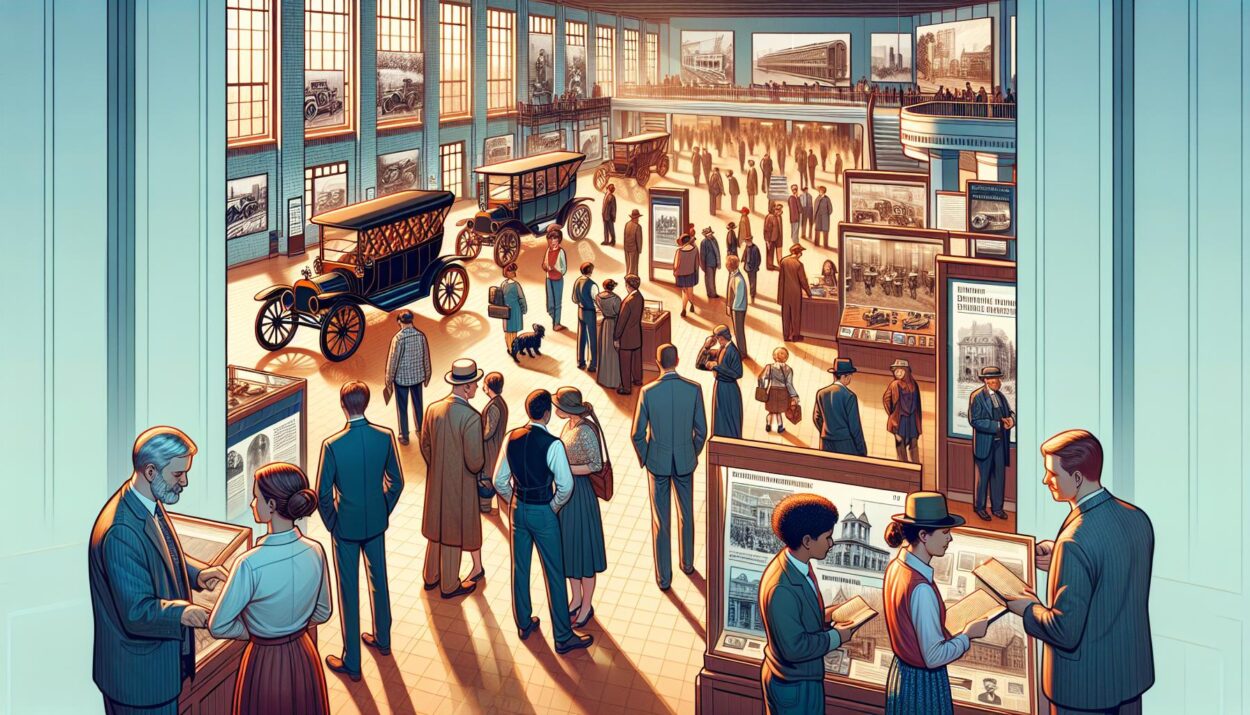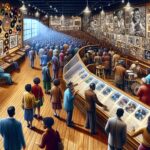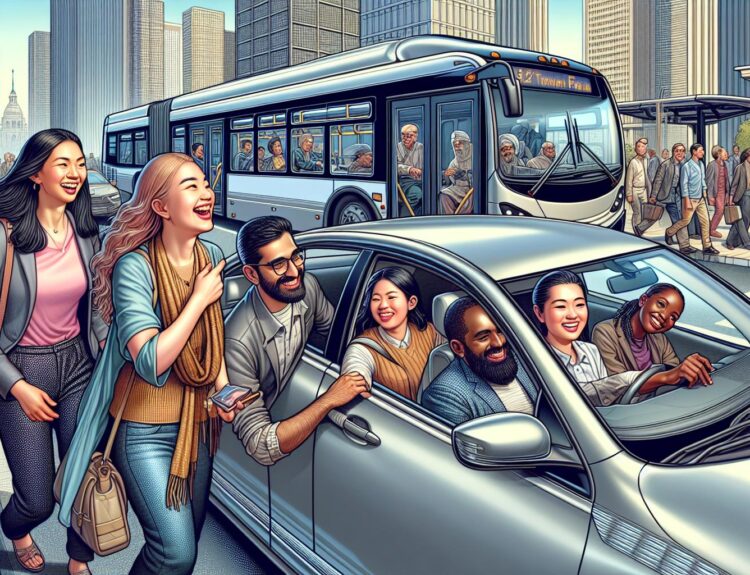Detroit’s often dubbed the Motor City, but let me tell you, it’s so much more than cars and factories. It’s a melting pot of cultures, each adding its unique flavor to the city’s vibe. From historic jazz clubs to modern art installations, Detroit’s cultural scene is vibrant and incredibly diverse.
I’ve had the chance to explore some of the city’s hidden gems, and I’m excited to share these experiences with you. Whether you’re a foodie, an art enthusiast, or someone looking to dive deep into the heart of American history, Detroit has something special in store for you. Let’s embark on this journey together and uncover the unique cultural experiences that make Detroit a city like no other.
The Detroit Institute of Arts
During my exploration of Detroit’s rich cultural tapestry, I couldn’t miss out on the Detroit Institute of Arts (DIA). Nestled in the heart of the city, this revered museum offered me a gateway to a world where history, innovation, and creativity converge. With over 65,000 artworks in its collection, the DIA stands as a beacon of culture not only for Detroit but for the entire world.
Walking through its grand entrance, I was immediately struck by the diversity of the collections. Ranging from ancient Egyptian artifacts to contemporary American art, every corner of the museum whispered stories of epochs and artists who have shaped our world. What grabbed my attention the most were the Detroit Industry Murals painted by Diego Rivera. These striking frescoes pay homage to the city’s industrial past and are considered by many to be Rivera’s best work. Standing before them, I felt as though I was a part of Detroit’s vibrant history.
But the DIA isn’t just about looking back; it’s also about inspiring future generations. They host an impressive array of programs and workshops designed to spark creativity and appreciation for the arts in people of all ages. It was delightful to see a group of school children, their eyes wide with wonder, as they were guided through the museum’s halls. It made me realize how art could bridge the gap between the past and the future, between individuals from all walks of life.
The museum’s commitment to accessibility is also worth noting. Admission is free for residents of Wayne, Oakland, and Macomb counties, making it an invaluable resource for the community. It’s initiatives like these that underscore how the DIA isn’t just a museum; it’s a shared space that invites everyone to explore, learn, and connect.
As I continued my journey through the museum, I stumbled upon their European art collection, a treasure trove of works by renowned artists like Van Gogh, Rembrandt, and Matisse. Each painting and sculpture told a story of its own, whisking me away to different times and places. The depth and breadth of the DIA’s collections are truly a testament to the enduring power and importance of art in our lives.
Discovering the Detroit Institute of Arts was an enlightening experience that further solidified my love for Detroit. It’s a place where art and community intertwine, offering endless possibilities for exploration and inspiration.
Motown Museum: Hitsville U.S.A.
After leaving the Detroit Institute of Arts, brimming with inspiration, my journey through Detroit’s cultural landscape led me to another gem that’s equally close to the city’s heart: the Motown Museum, or as it’s affectionately known, Hitsville U.S.A. Founded by Berry Gordy in 1959, this iconic music studio not only birthed a new era in music history but also became a beacon of hope and transformation for many. It’s not just a museum; it’s a pilgrimage site for music lovers worldwide.
Walking into the museum, I was immediately struck by the intimate atmosphere. It felt like stepping back in time, into a world where the sounds of Marvin Gaye, The Supremes, Stevie Wonder, and so many others still echoed through the walls. Our guide shared fascinating stories behind the Motown movement, emphasizing its role in uniting people across racial and social divides. The spirit of innovation and resilience that characterized Motown’s journey was palpable in every room and artifact.
What sets the Motown Museum apart is its interactive exhibits. From standing in Studio A, The Heart of Motown, where countless hits were recorded, to engaging with the restored control room, every corner offers a unique, immersive experience. It’s one thing to listen to Motown classics; it’s another to actually stand in the same spot where these legends recorded their timeless tracks.
The exhibit that perhaps left the deepest impression on me was the gallery dedicated to Berry Gordy’s unwavering vision. His desk, preserved as it was, alongside the stories of his challenges and triumphs, painted a vivid picture of the determination it took to bring Motown to life. Berry Gordy’s legacy is a testament to what passion and innovation can achieve against the odds.
One cannot overlook the profound community impact of the Motown Museum. It’s not only about celebrating past successes but also about inspiring new generations. The museum actively engages in educational programs and community events, fostering a sense of belonging and encouraging artistic expression among Detroit’s youth.
As I exited through the gift shop, laden with memorabilia that I couldn’t resist buying, I felt a deep connection to Motown’s story. This visit wasn’t just a walk down memory lane; it was a powerful reminder of music’s ability to inspire, to challenge, and to connect us all.
Eastern Market: A Foodie’s Paradise
Following my immersive visit to the Motown Museum, my journey through Detroit’s unique cultural experiences led me to an unexpected delight — Eastern Market. Standing as one of the country’s oldest and largest year-round markets, it’s a smorgasbord of colors, scents, and bustling energy that immediately captivated my senses. I found myself in awe of the sheer diversity of fresh produce, specialty foods, and vibrant art installations that make up this culinary haven.
Walking through the market, I couldn’t help but be drawn into the intimate interactions between local farmers, artisans, and shoppers. There’s a palpable sense of community in the air, reminiscent of ages-old marketplace traditions where food and culture intertwine exquisitely. Eastern Market isn’t just a place to buy groceries — it’s a foodie’s paradise, offering a taste of Detroit’s rich agricultural and culinary heritage.
One of the highlights of my visit was the Saturday Market — a weekly festivity where the entire district comes alive. Vendors from all corners of Michigan gather to showcase an astounding variety of goods. From fresh fruits and vegetables to handcrafted cheeses and artisanal baked goods, the choices seem endless. As I meandered through the aisles, sampling and savoring, I learned first-hand about the importance of supporting local food systems and the impact it has on the community.
| Day | Focus | Note |
|---|---|---|
| Saturday | Everything! | The largest variety of vendors |
| Sunday | Artisans and Makers | Focus on crafts and handmade goods |
| Tuesday | Health and Wellness | Smaller, more intimate setting |
In addition to the weekly markets, Eastern Market is renowned for its Murals in the Market initiative, transforming the district into a sprawling canvas of street art. Each mural tells a story, celebrating Detroit’s history, its people, and the vibrant culture that permeates the city. This blend of art and commerce has not only beautified the area but also attracted a new wave of visitors, eager to experience the market’s dynamic atmosphere.
The Heidelberg Project: Art in Unexpected Places
Exploring Detroit’s vast cultural landscape led me to one of its most astonishing and unconventional gems – the Heidelberg Project. Nestled in the heart of the city, this sprawling outdoor art environment turned a once-neglected neighborhood into a vibrant exhibition space, showcasing art in the most unexpected places.
Founded in 1986 by artist Tyree Guyton, the Heidelberg Project was born from a vision to heal and inspire the community through art. Using discarded items and salvaged materials, Guyton and his companions transformed vacant houses and streets into an immersive art experience. The project challenges traditional notions of what art can be and where it can exist, making a walk through this area a journey into the power of creativity and resilience.
- The Dot House: Covered in a polka dot motif, it’s a celebration of color and whimsy.
- The Clock House: Featuring a myriad of clocks, this installation contemplates the concept of time.
- The Teddy Bear Fence: A poignant display of countless teddy bears, symbolizing childhood memories and lost innocence.
The Heidelberg Project isn’t just about viewing art; it’s about experiencing the transformation of space and community through creativity. As I strolled through the area, the vibrant sculptures, installations, and painted surfaces spoke to the indomitable spirit of Detroiters. Each piece tells a story, reflecting on social issues, community resilience, and the power of imagination.
Interestingly, the project has faced challenges over the years, including opposition from local government and the destruction of several installations due to arson. Despite these setbacks, the Heidelberg Project has persevered, evolving into an internationally recognized art destination that draws visitors from all corners of the globe. It stands as a testament to the transformative power of art, serving both as a catalyst for community development and as a unique platform for artists to engage with pressing societal themes.
Visiting the Heidelberg Project made me realize that art doesn’t need to be confined to galleries or museums to be impactful. It’s a living, breathing entity that flourishes in the most unexpected places, turning the ordinary into the extraordinary. The project’s ongoing mission to inspire change and foster creativity is a poignant reminder of art’s crucial role in community healing and empowerment.
Detroit Historical Museum: Delving into the City’s Past
Stepping into the Detroit Historical Museum is like walking through a time portal. I’ve always been fascinated by history, so this visit felt like I was about to unravel the city’s past layer by layer. Located on Woodward Avenue, the museum offers an immersive dive into Detroit’s rich history, from its founding in 1701 through to its present day.
The museum’s galleries are something else. Streets of Old Detroit transported me back in time with its perfectly recreated 19th-century streets. Walking through it, I could almost hear the clip-clop of horse-drawn carriages. Then, there’s the Motor City exhibit, which pays homage to Detroit’s pivotal role in the American automotive industry. It’s incredible to see how this industry shaped the city and the entire country. What struck me most was the level of detail in each exhibit. Whether it was the gleaming vintage cars or the intricate storefronts, every piece seemed to tell a story.
Another highlight for me was the Doorway to Freedom exhibit, which illuminates Detroit’s significant role in the Underground Railroad. Seeing the tales of courage and struggle gave me a deeper appreciation for the city’s place in the fight for freedom. It’s not just about the cars and music; it’s about the spirit of resilience and liberty that defines Detroit.
I also took part in a few of the museum’s interactive exhibits. These weren’t just engaging but incredibly enlightening, offering a hands-on experience of Detroit’s history. From sitting in a vintage car similar to the ones produced during Detroit’s automotive boom to interacting with displays that detailed the labor movements of the early 20th century, I got to experience a slice of life from different eras.
As I moved from exhibit to exhibit, I couldn’t help but be impressed by how the museum caters to all ages. Kids were just as engrossed as the adults, and there were plenty of educational programs designed to spark their interest in history. It struck me as a brilliant way to educate future generations about their city’s past.
Conclusion
Exploring Detroit’s unique cultural tapestry has been an enlightening journey for me. The Detroit Historical Museum, with its vivid exhibits, not only narrated the city’s fascinating story but also deepened my appreciation for its resilience and innovation. It’s clear that Detroit is more than its automotive legacy—it’s a city of freedom fighters and trailblazers. Whether you’re a history buff or simply curious about the Motor City, this museum offers a compelling glimpse into what makes Detroit truly special. I’m inspired by what I’ve learned and look forward to discovering even more about this vibrant city.





